Abstract
Experience in setting up an inexpensive microbiology laboratory in the Bangladesh National Society for the Blind Eye Hospital and Training Complex at Chittagong is presented, together with the results of a pilot study to identify organisms responsible in 33 consecutive cases of suppurative keratitis in the Chittagong area of Bangladesh. Of the 33 cases 21 were positively identified by means of Gram stain and/or culture. Two-thirds of the responsible organisms were bacteria, and one-third were fungi. The bacterial causes included Streptococcus pneumoniae and Pseudomonas aeruginosa. The fungi isolated were Aspergillus fumigatus, Aspergillus ochraceus, and Fusarium solani. Among the causes of failure to diagnose the organism was chronicity of infection and previous treatment. The value of the study in the planning of future treatment regimens, and the implications of setting up similar relatively cheap microbiology laboratory facilities in developing countries, are discussed.
Full text
PDF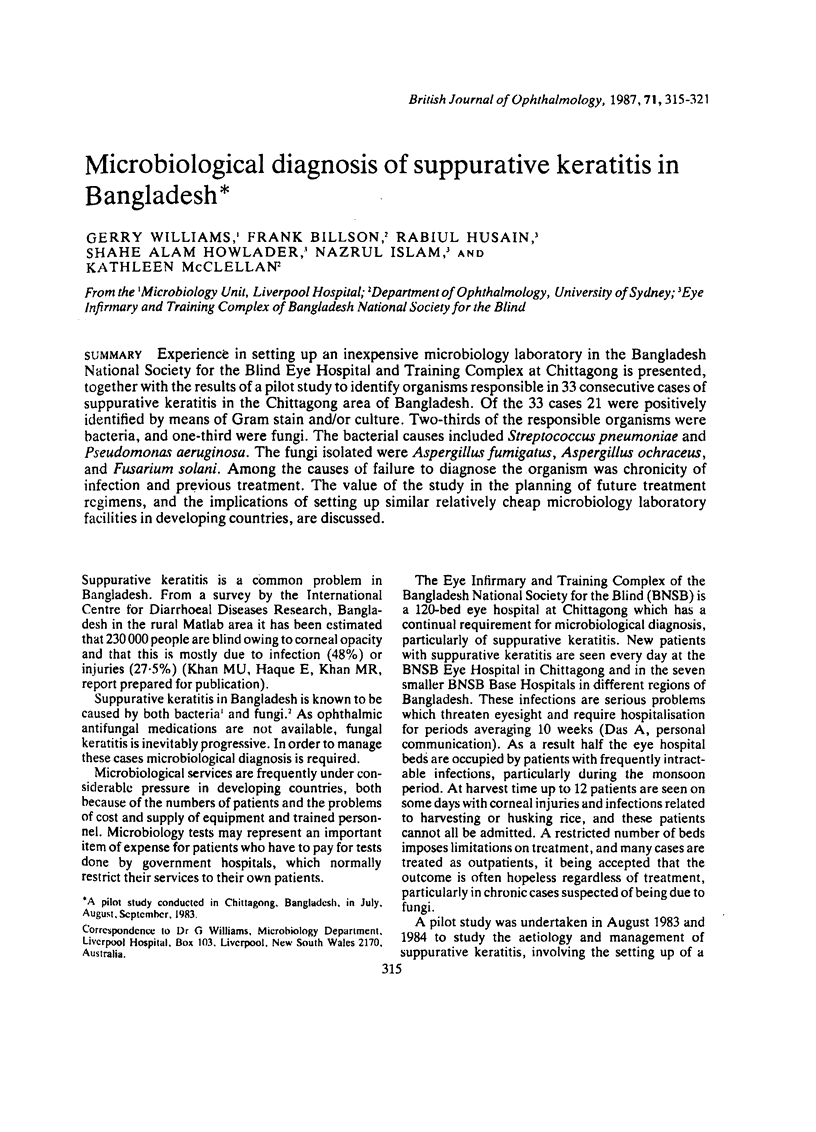
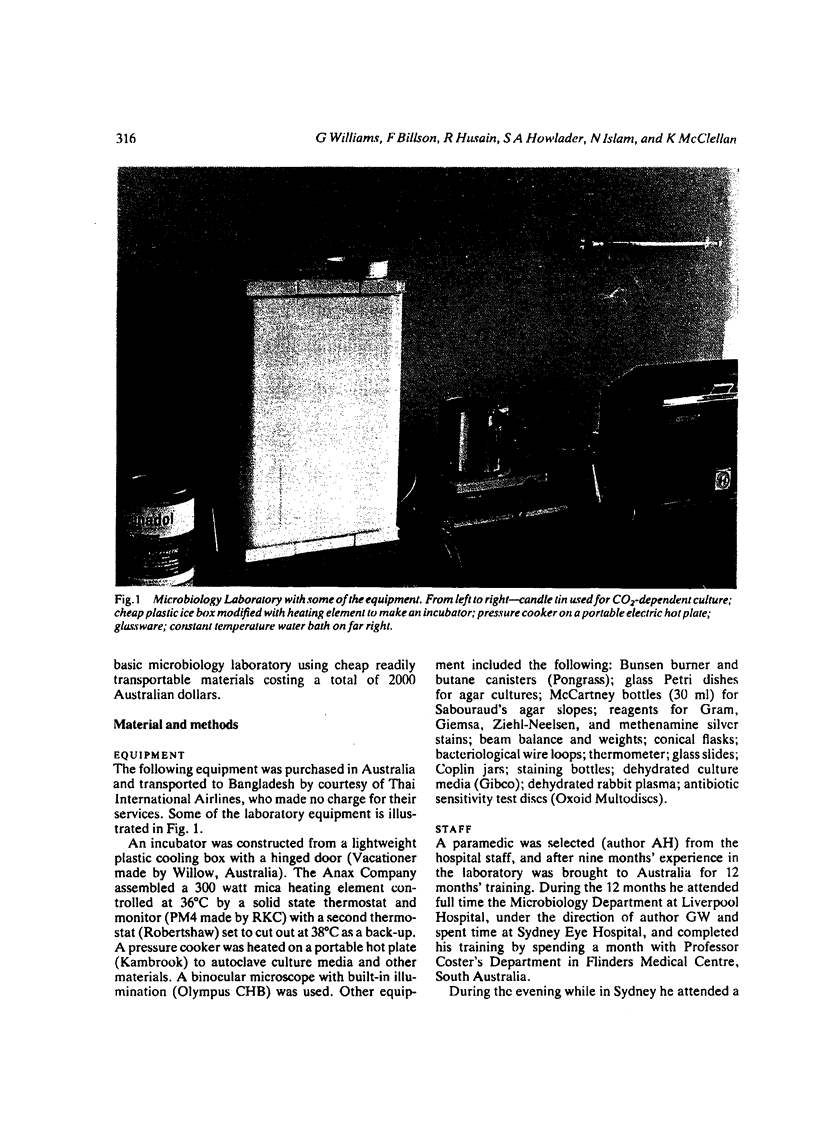
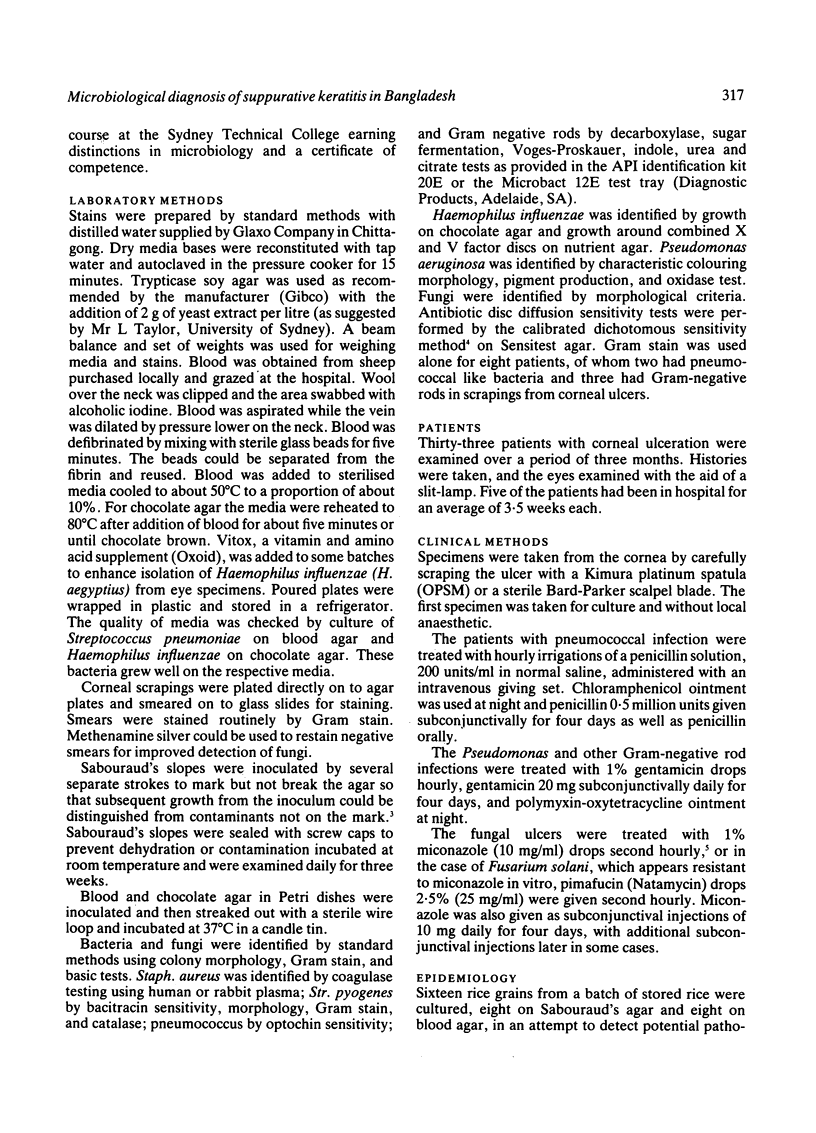

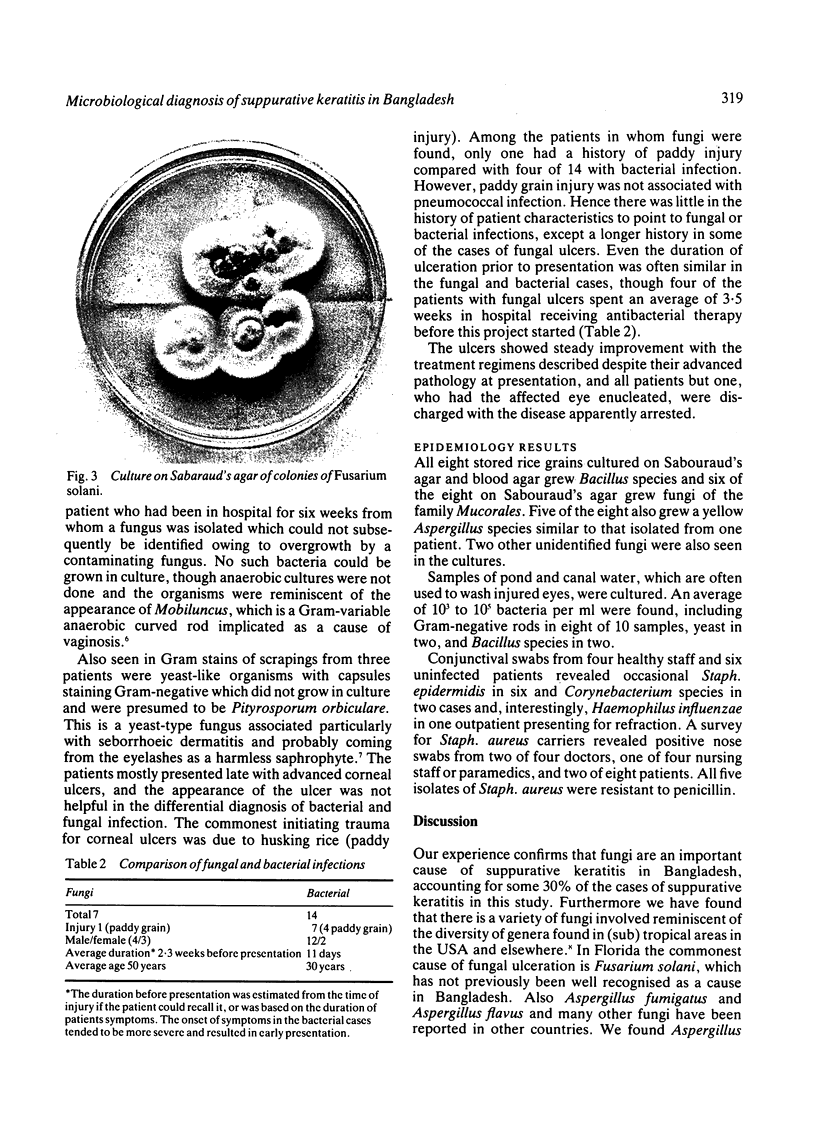
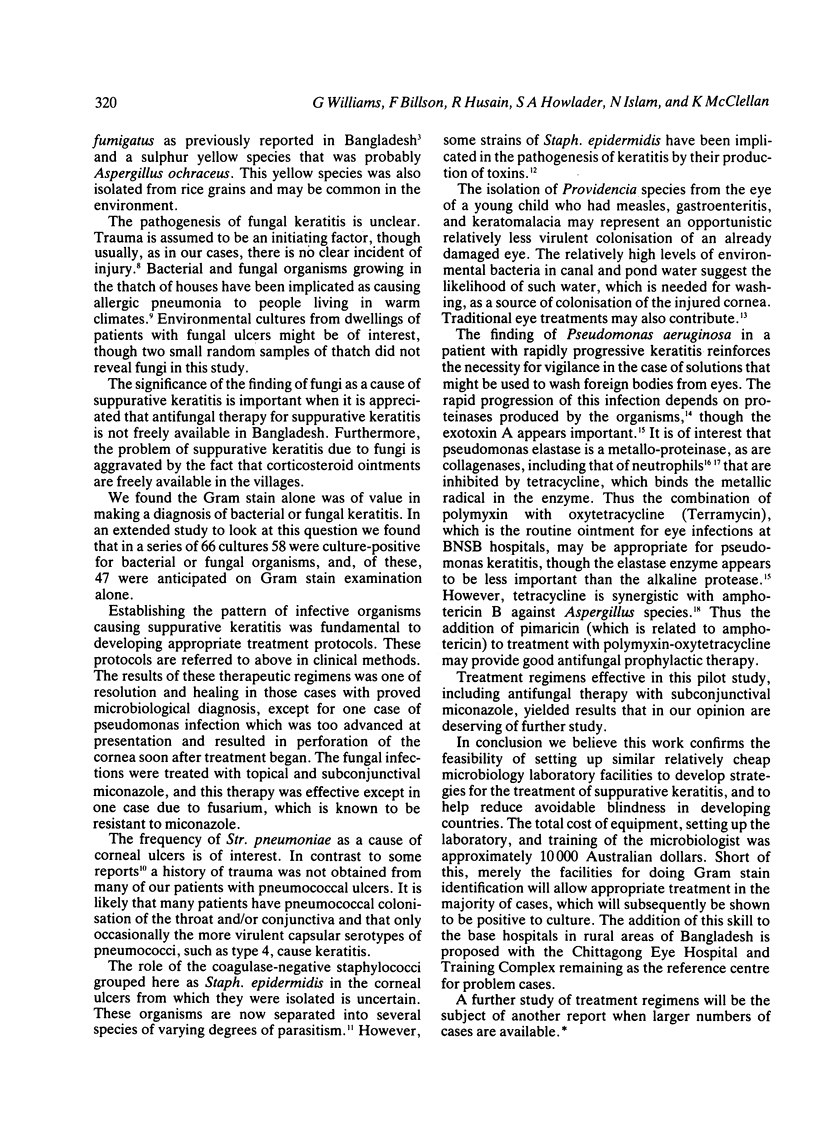
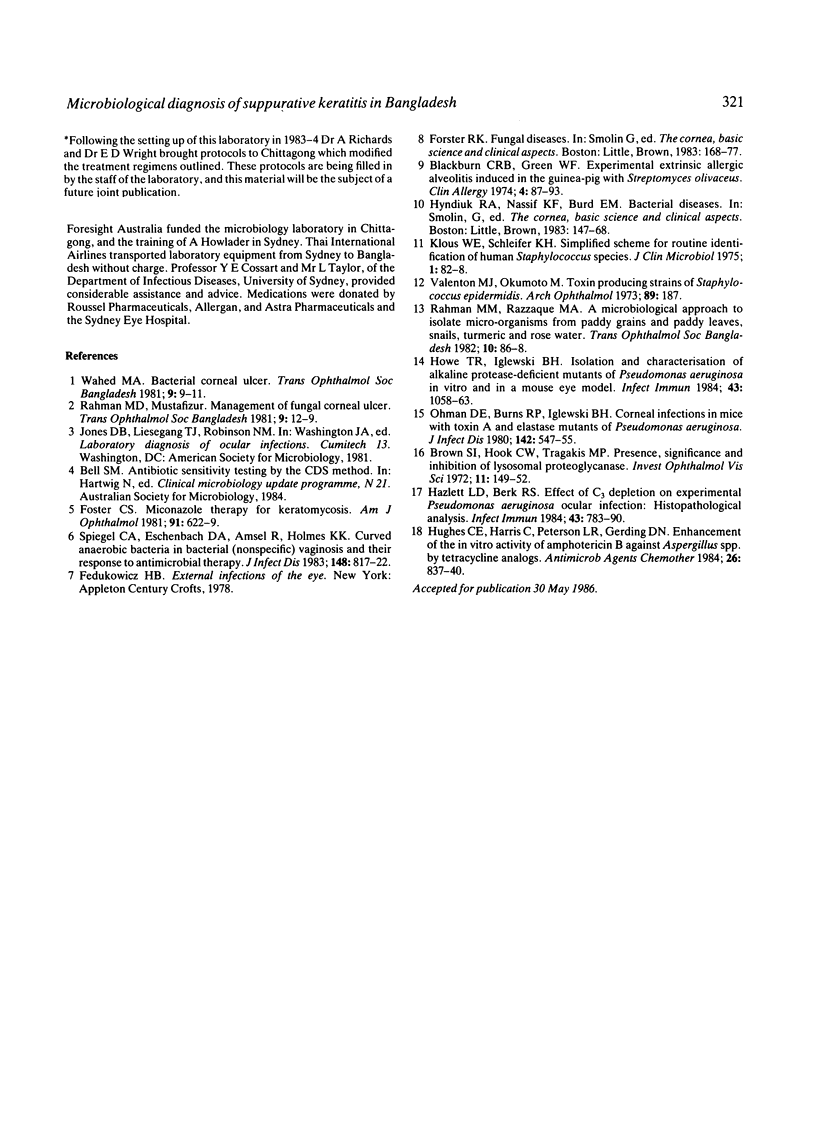
Images in this article
Selected References
These references are in PubMed. This may not be the complete list of references from this article.
- Blackburn C. R., Green W. F. Experimental extrinsic allergic alveolitis induced in the guinea-pig with Streptomyces olivaceus. Clin Allergy. 1974 Mar;4(1):87–93. doi: 10.1111/j.1365-2222.1974.tb01366.x. [DOI] [PubMed] [Google Scholar]
- Brown S. I., Hook C. W., Tragakis M. P. Presence, significance, and inhibition of lysosomal proteoglycanases. Invest Ophthalmol. 1972 Mar;11(3):149–152. [PubMed] [Google Scholar]
- Foster C. S. Miconazole therapy for keratomycosis. Am J Ophthalmol. 1981 May;91(5):622–629. doi: 10.1016/0002-9394(81)90063-5. [DOI] [PubMed] [Google Scholar]
- Hazlett L. D., Berk R. S. Effect of C3 depletion on experimental Pseudomonas aeruginosa ocular infection: histopathological analysis. Infect Immun. 1984 Mar;43(3):783–790. doi: 10.1128/iai.43.3.783-790.1984. [DOI] [PMC free article] [PubMed] [Google Scholar]
- Howe T. R., Iglewski B. H. Isolation and characterization of alkaline protease-deficient mutants of Pseudomonas aeruginosa in vitro and in a mouse eye model. Infect Immun. 1984 Mar;43(3):1058–1063. doi: 10.1128/iai.43.3.1058-1063.1984. [DOI] [PMC free article] [PubMed] [Google Scholar]
- Hughes C. E., Harris C., Peterson L. R., Gerding D. N. Enhancement of the in vitro activity of amphotericin B against Aspergillus spp. by tetracycline analogs. Antimicrob Agents Chemother. 1984 Dec;26(6):837–840. doi: 10.1128/aac.26.6.837. [DOI] [PMC free article] [PubMed] [Google Scholar]
- Kloos W. E., Schleifer K. H. Simplified scheme for routine identification of human Staphylococcus species. J Clin Microbiol. 1975 Jan;1(1):82–88. doi: 10.1128/jcm.1.1.82-88.1975. [DOI] [PMC free article] [PubMed] [Google Scholar]
- Ohman D. E., Burns R. P., Iglewski B. H. Corneal infections in mice with toxin A and elastase mutants of Pseudomonas aeruginosa. J Infect Dis. 1980 Oct;142(4):547–555. doi: 10.1093/infdis/142.4.547. [DOI] [PubMed] [Google Scholar]
- Spiegel C. A., Eschenbach D. A., Amsel R., Holmes K. K. Curved anaerobic bacteria in bacterial (nonspecific) vaginosis and their response to antimicrobial therapy. J Infect Dis. 1983 Nov;148(5):817–822. doi: 10.1093/infdis/148.5.817. [DOI] [PubMed] [Google Scholar]





